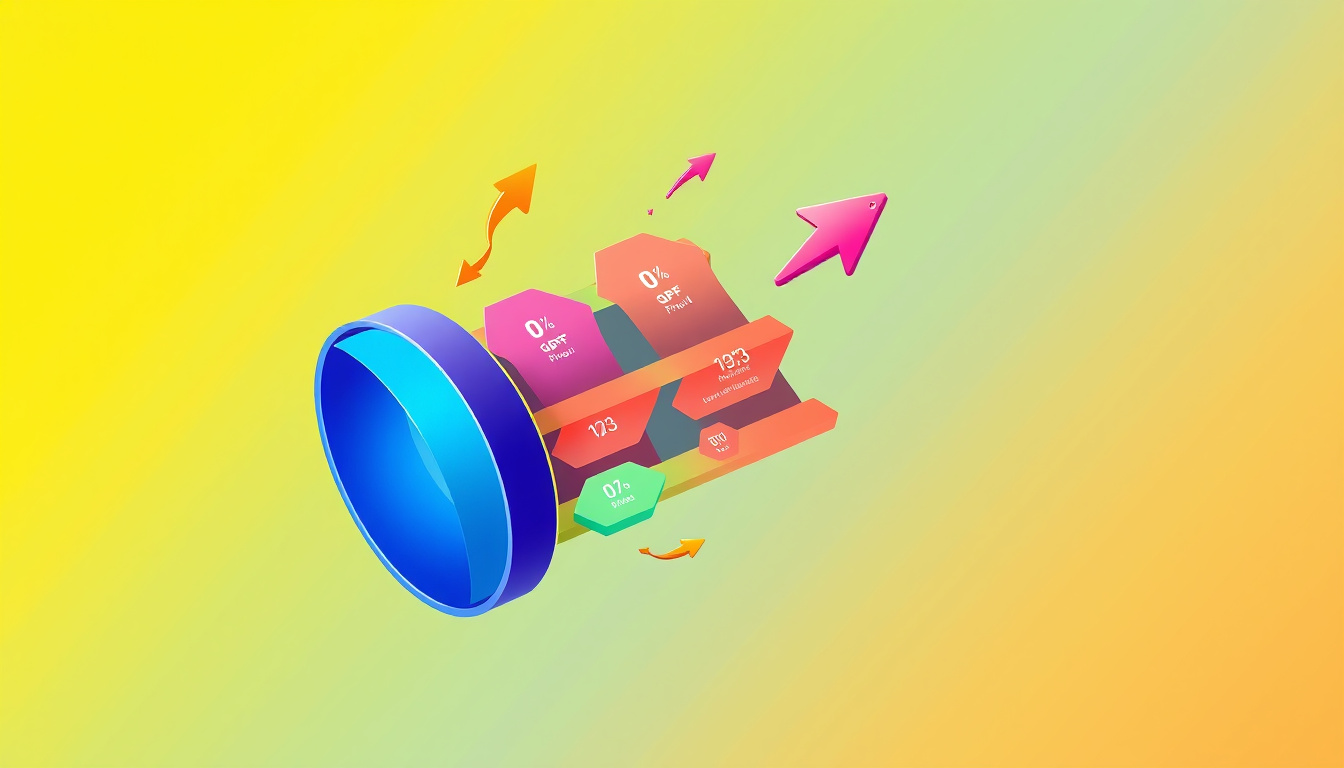Effective Funnels Strategies to Boost Your Business Conversion Rates

In today's digital market, funnels guide your customer journey. Each word connects closely to the next. Funnels, or sales funnels, lead a buyer from their first glance to their purchase and beyond. A funnel works step by step to cut drop-offs and grow your sales. In this article, we share clear ideas to boost your business conversion rates with solid funnel tactics.
What Are Funnels and Why Do They Matter for Business?
A funnel is a path that a customer follows. Each link in the chain connects a step from meeting your brand to becoming a repeat buyer. Think of a funnel as a set of steps that catch and keep a prospect's interest. This design cuts the loss of potential buyers and turns more leads into paying customers.
Why use a funnel?
- It helps you shape messages for each step
- It shows you where buyers leave, so you can fix that area
- It raises the chance that prospects stay and buy again
Research shows that well-built funnels can boost conversion rates by as much as 30%. This data shows that mastering funnels matters in a competitive space.
The Steps in a Good Sales Funnel
A standard sales funnel has these parts:
- Awareness
- Interest
- Decision
- Action
- Loyalty and Advocacy
Below are steps and simple tips for each one.
1. Awareness: Catching Eyes
The first step makes people know your brand or sale. Methods include:
- Social media ads that target the right crowd
- Search engine work to appear in results
- Blog posts, videos, or pictures that tell your story
- Pay-per-click ads that bring visitors
Tip: Use strong headlines and clear points. Here, you cast a wide net and let people see your offer.
2. Interest: Holding Attention
After you catch an eye, the next task is to hold it. Give easy-to-read content that builds trust. Try these ideas:
- Give free material such as ebooks or online classes
- Send short email notes
- Use quizzes that ask questions
- Share real customer words
A good move is to send messages that fit each reader's needs. The close link between your words and their interests builds trust.

3. Decision: Helping Buyers Choose
At this point, the buyer checks if your solution fits them. Ease their choice by:
- Showing simple comparisons with others
- Sharing short stories of how you helped others
- Stating clear features and benefits
- Offering time-bound deals to prompt a choice
Tip: Send a series of brief emails that help move the buyer toward a choice.
4. Action: Turning Interest Into Sales
This step is where a lead becomes a customer. Here, you can ease the sale by:
- Placing clear buttons that say what to do
- Cutting the steps in the buying process
- Giving several ways to pay
- Adding refund or guarantee options to calm concerns
Keeping the words and steps close together helps lift conversion rates.
5. Loyalty & Advocacy: Keeping Customers and Spreading the Word
After a sale, work to keep the customer. Some ideas are:
- Give fast, kind service
- Create a rewards plan
- Send short, friendly follow-ups and offers
- Ask for short reviews that share real words
Good words and close steps mean a buyer will come back and may even bring a friend.
Ways to Fix and Boost Your Funnels
Improving your funnel means you keep testing and adjusting each step. Try these ideas:
Run A/B Tests
Try different landing pages, email titles, and buttons to see which one connects best with your crowd. Small word shifts can boost sales rates.
Use Data to Guide Edits
Keep track of how your funnel works with tools like Google Analytics. See where people leave and change those spots.
Make the Customer Experience Personal
Give notes and offers that match what each buyer does. This close link between word and need can build trust and win sales.
Apply Automation Tools
Set up tools that send emails and ads on a schedule. This way, your team can work on new ideas while the system keeps the words flowing.
Create Offers That Stick
Give special deals or free trials to give a nudge. These close and clear deals speak directly to buyers.
A Clear List of Funnel Tips
Here are some simple tips you can use now:
- Make your landing page fast and clear
- Use exit popups to catch people who want to leave
- Add live chat so questions get quick answers
- Break your email list into groups for the best word fit
- Offer free trials or demos to show how you work
Common Hurdles and Fixes
When you build a funnel, you might find some snags:
- High bounce rates: Match your landing page with your ad promise.
- Low engagement: Improve the quality and fit of your words.
- Tech problems: Check your site and tools often.
- Missing data: Use steady tracking to get clear facts.
Fix these by learning from results and adjusting your steps.
Key Tools to Build and Fix Funnels
Some tools can make your funnel work smoother:
- CRM systems: HubSpot, Salesforce
- Email tools: Mailchimp, ActiveCampaign
- Landing page creators: Unbounce, Leadpages
- Data trackers: Google Analytics, Hotjar
- Automation helpers: Zapier, Automate.io
By joining these tools, each word and step in your funnel links well for each buyer.
Conclusion: Master Funnels to Boost Your Business
Funnels help your words carry the buyer from first sight to a lasting bond. A funnel works when you use simple language, careful steps, and strong links between each stage. By sending the right words at the right time and testing often, you can raise your conversion rates.
Keep testing and refining your messages. When each word and step connects closely, visitors become loyal buyers. A good funnel stands as a strong tool for steady growth.
Ready to work on your funnel? Start by mapping out your steps. Find weak spots and adjust them with the ideas shared here. Your pathway to more sales and steady growth starts now!
FAQ About Funnels
Q1: What makes a funnel work well?
A: A good funnel has clear pages, short emails, strong buttons, personal words, and an easy checkout that ties each step closely.
Q2: How soon do funnels show change?
A: Results depend on your field and current steps. Many see change in 3 to 6 months with steady tests.
Q3: Can a small business use funnels?
A: Yes. Funnels adapt well to small groups. They are a good tool when you work with a small budget and want clear words.
For more clear advice on funnels, visit this guide from Neil Patel on sales funnels.
Take Action Now!
Work on your funnel steps today. Simplify the words, check each step, and boost your customer path. A smart funnel turns visitors into loyal buyers. Begin now and build a path that connects each word and step on your way to growth!